Age of Empires: Definitive Edition Review
Age of Empires: Definitive Edition
A dusty relic of a golden era?
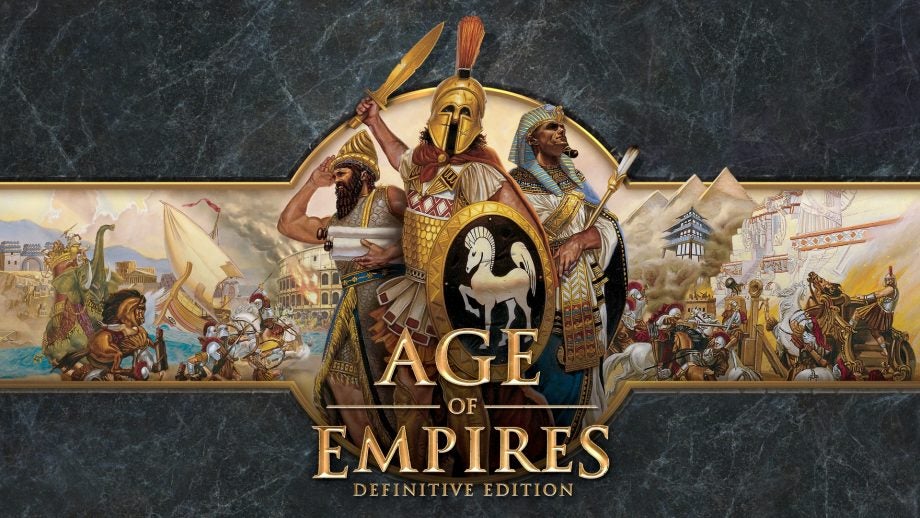
Verdict
Pros
- Addictive RTS gameplay still stands up today
- Varied and engaging missions
- Impressive 4K-friendly remastered graphics
- Packed with single-player campaigns and multiplayer options
Cons
- Primitive AI still doesn’t meet modern standards
- Lots of fiddly micro-management
- Many unit graphics carry over from faction to faction
Key Specifications
- Review Price: £14.99
Available on PC
So, after last year’s HD remake of StarCraft, another nineties classic receives the same treatment. This time it’s Microsoft’s Age of Empires, one of the best-loved historical strategy titles of all time and a game still revered by many PC gamers. If Command and Conquer and WarCraft defined the RTS in the mid-1990s, Age of Empires was the game that showed you didn’t have to embrace dystopian sci-fi or dark fantasy to make it work. History was every bit as powerful.
Buy Age of Empires Definitive Edition from Amazon
Ensemble Studio’s flash of genius was to mesh the RTS with elements of what we’d now call a 4x game (eXplore, eXpand, eXploit and eXterminate) and, in particular, the mighty Civilization. In Age of Empires you played the leader of an early civilization, taking your people on a journey from the Stone to Bronze and Iron Ages to the beginnings of the Classical civilizations, battling rival civilizations at different levels of progress. But where in Civ progress was an end in itself, Age of Empires focused in on the serious business of waging war. Sure you could engage in some limited trade and diplomacy or try your hand at constructing wonders of the world, but what the game was really interested in was pounding your foes into submission.
In other words, it’s an RTS game with 4x knobs on rather than a genuine hybrid. Campaign missions take place in different eras with different objectives, but in many cases the basic idea is the same. You start with a small settlement and use your basic villager units to forage for food, wood, stone and gold. You construct buildings – a barracks, a granary, an archery range, docks – that enable you to recruit new units, upgrade them or advance to the next technological era. You use these units to defend your settlement against one or more enemies, while building an army that can explore and dominate the map. You may be tasked with destroying farms, collecting resources or slaying an enemy leader, but this involves surviving long enough to do so, and putting the hurt on your adversaries where you can.
Related: Age of Empires 4 latest news
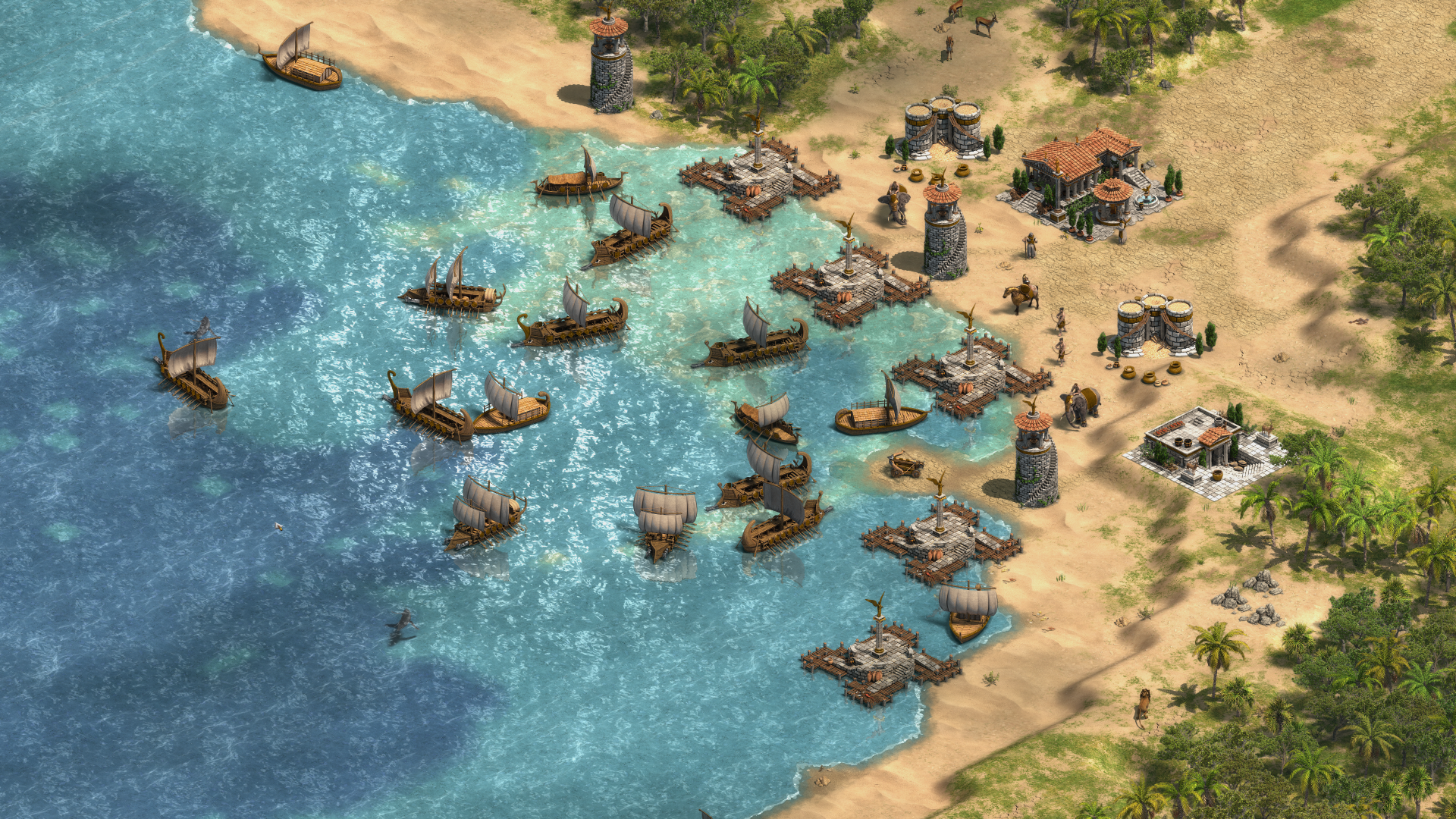
The game’s generous selection of campaigns covers a range of civilizations, from the Egyptians to the Babylonians, the Greeks to the Japanese. In practice, each has the same basic unit types and differ mostly in sprite design. In fact, several civilizations share the exact same units, while even the Japanese have to put up with Roman centurions in their midst.
That said, each faces different obstacles and each a very different set of missions. What’s more, this Definitive Edition throws in the Rise of Rome expansion, with an extra set of campaigns covering the fortunes of Rome, Palmyra, Macedonia and Carthage during the rise of the titular Empire. Even the Egyptian campaign – a series of relatively brief tutorial missions – will take you a few hours. If you plan to get through the lot, you’ve got your work cut out.
Microsoft has taken roughly the same approach as Blizzard did with StarCraft. Instead of reproducing the game with modern 3D graphics, it’s rebuilt the sprites to suit HD and 4K resolutions while adding anti-aliasing and a layer of modern lighting effects. The results are actually better than in StarCraft Remastered, with a zooming view to focus in on the extra detail and a lot of the original’s old-school charm captured and refined. The new water effects are surprisingly beautiful, while the destruction can be spectacular at times.
There’s no way that you’re going to be fooled into thinking that you’re playing a modern RTS, but you’re left with something that looks like the Age of Empires you have nostalgic memories of, not the low-resolution blocky horror it was in reality.
The team at Forgotten Empires has also refined the gameplay, tweaking the UI, moving the minimap, refining the controls for grouping units and adding an attack-move order so that units can move and then enter combat without needing express instructions. The pathfinding, we’re told, has also been improved. Yet this is still very much Age of Empires as we used to play it – simpler than more recent RTS games in some ways, though still very complex in others.
Related: Best PC Games
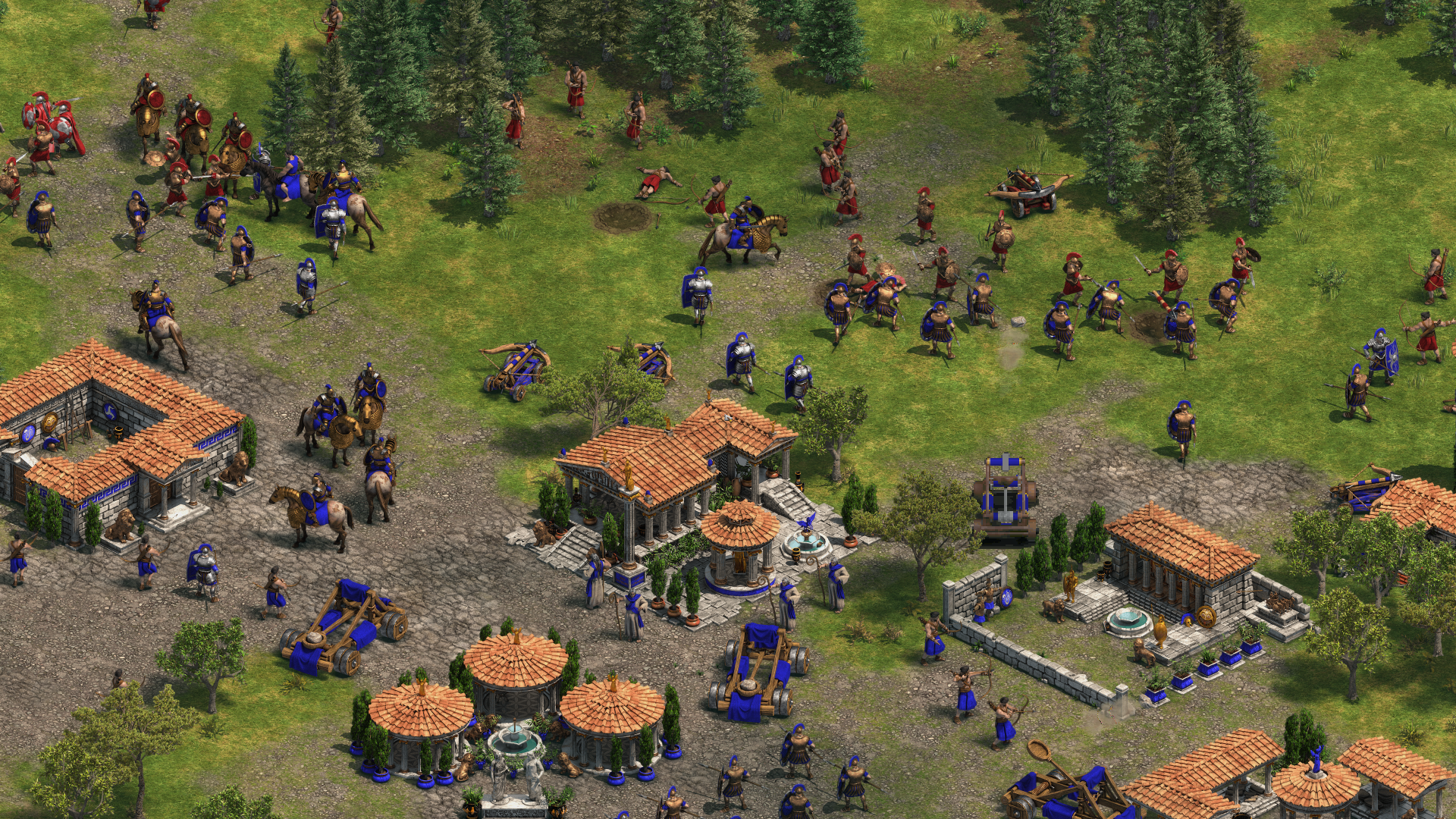
This conservative approach turns out to be both plus and minus. There’s less emphasis on optimum build orders and speed of action than in some modern FPS games. You’re not fussing about unit formations or, for the most part, special abilities, though there are units like the Priest that can heal friendly units or convert nearby hostiles. With a unit cap of 50 in the single-player campaign, you’re not marshalling massive forces, and as the basic unit types carry over from one civilization to the next, you don’t have to spend time learning what a thousand different units do. It should feel restrictive, but there’s actually a great purity to it.
While the campaign missions feel stripped back, without cut-scenes, story-driven events or distinctive locations – only the sprites and the architecture really change – their design is still challenging and varied. Like Command and Conquer, Age of Empires throws in some missions where you’re a lone wolf working with what you find on the ground, along with some where you start off in a more advanced state and some where you have to build from scratch. Missions that seem easy at first have sneaky twists, or tactical obstacles that push you to change the way you play.
Age of Empires doesn’t go easy on you. I breezed through most of the Egyptian campaign only to take a kicking in the first part of the Greek one, simply because my settlement was coming under constant assault from every other faction, giving me no time or resources to do anything more than fight and replenish my troops. It was only on restarting and trying different strategies that I found an approach that worked. Ditto with the early missions of the Punic Wars campaign. With your city under attack right from the start, you’ve got a lot on your plate to contend with.
Related: Upcoming Xbox One Games
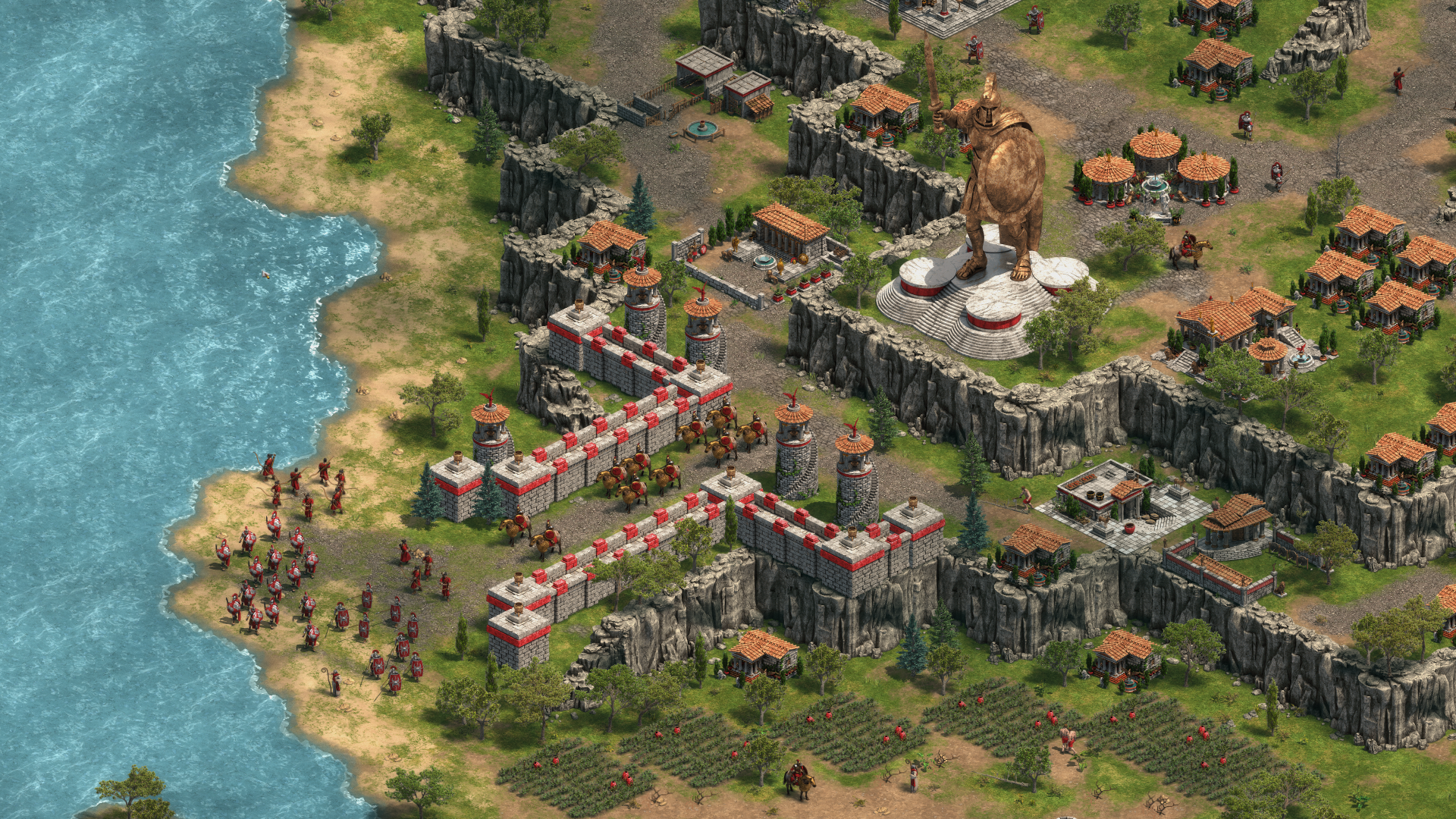
On the minus side, there’s too much micro-management. You have up to four resources to collect at any time, with the collection points eventually running dry, forcing you to find and allocate villages to new ones. Even farms aren’t permanent, needing a complete rebuild on a fairly regular basis. You have buildings to construct, units to queue for recruitment and new eras and upgrades to push for. And while you’re doing all this, you also have to manage your defensive, offensive and scouting forces, plus fishing boats, trade ships and warships. It’s very, very hard to keep an eye on all of this at once.
This wouldn’t be a problem, but the AI leaves a lot to be desired. Units you leave in defence will happily stand around and ignore invaders until they’re really close, and even then can’t be trusted to reach the foe without taking some weird route around a clump of trees, or to return where you left them afterwards. You can think all’s going well, miss the bugle call that warns of conflict, then return to your settlement and find you’ve sustained heavy losses.
Attacking forces can also be wiped out unless you’re carefully monitoring and tweaking their every movement. And don’t even get me started on getting naval forces through narrow straits; imagine the ten most dim-witted people you know trying to get through a single revolving door at the exact same time, while drunk.
Related: E3 2018 latest news
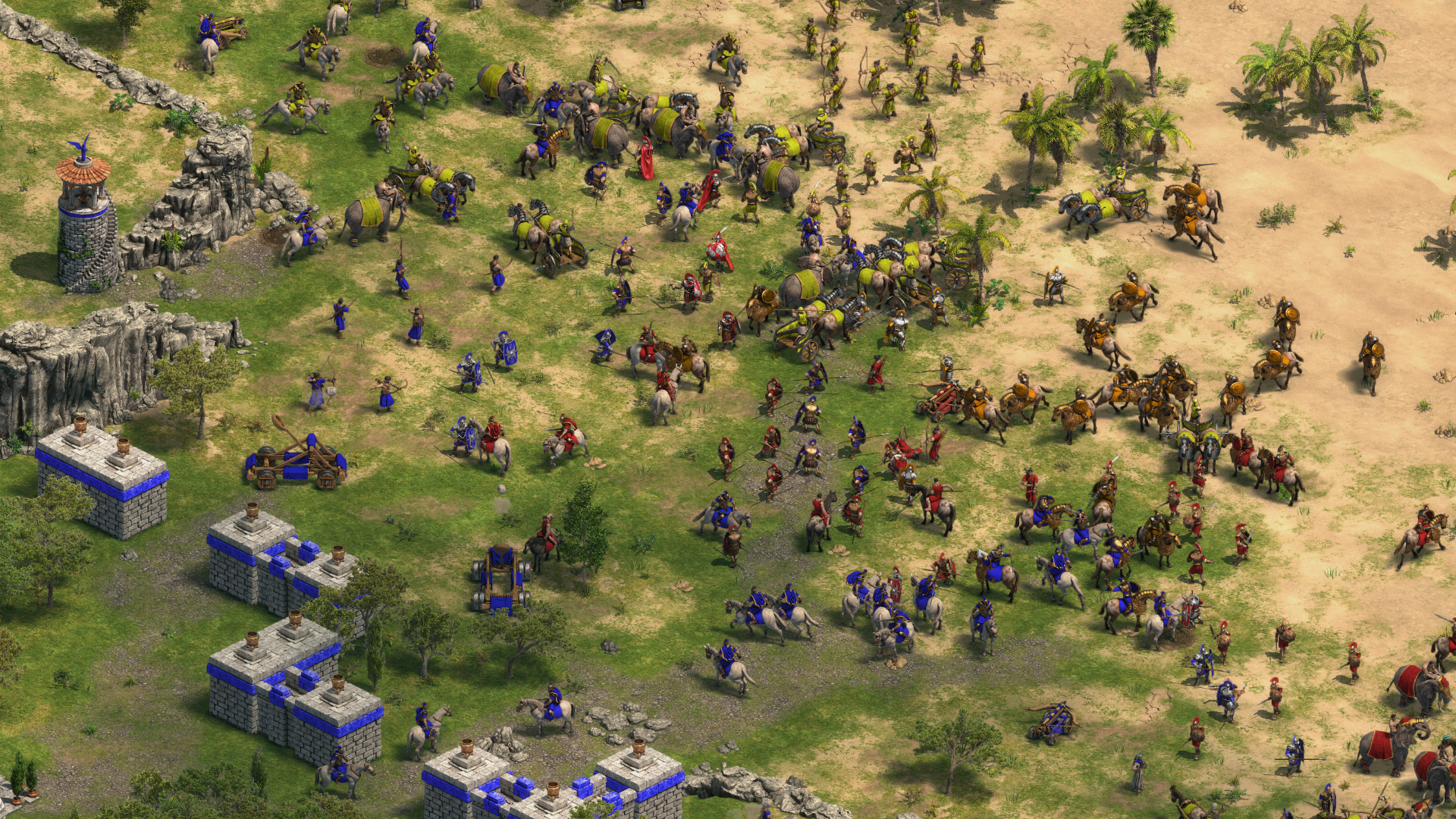
Meanwhile, you can find that a villager or fishing boat has exhausted its current source of meat, wood or fish, but hasn’t the initiative to move to the next one even though it’s within easy reach. Both are smarter than they were in the original release, but still prone to laziness and inertia.
This means that playing Age of Empires can be a tiring and demoralising experience, where you’re never really safe from a shock defeat and multi-tasking and micro-management are must-have skills. You need to save all the time (to different slots, in case you’ve made a disastrous mistake) and you really, really need to pay attention. Audio cues, unit grouping and the next idle builder button are absolutely crucial to success.
Why bother then? Well, you bother because Age of Empires still has the magic of a classic game. There’s the old satisfaction in developing your armies, moving from primitive axemen and archers to cavalry, armoured hoplites, chariots and war machines. You cheer as scores are settled, enemy stores are razed and pillages and their settlements are decimated by catapults and ballistae. Like StarCraft Remastered, Age of Empires doesn’t need to depend on nostalgia; it’s a ferociously addictive game today.
What’s more, the single-player campaigns are just the start. Age of Empires flourished as a multiplayer game of subtle, evolving strategies and careful balance, and while we haven’t had the time or opportunity to play many online games, it’s not hard to see the same being true here. Plus, there are built-in tools for creating your own custom missions and playing other peoples’, so the game won’t be done even when you make it through the ready-made campaigns.
Buy Age of Empires Definitive Edition from Amazon
Verdict
With its sprite-based visuals and creaky AI, it’s not hard to spot signs of Age of Empires’ advanced years. It’s equal parts frustration and exhilaration, awesome when you’re winning, aggravating when a moment’s lapse leads to ignominious defeat. Yet the forward-thinking mission design and the pace and balance of the gameplay means it’s still weirdly addictive and absorbing. It’s no longer the best of its kind, but this is one historical artefact that’s still worth playing here and now. Come on Microsoft, roll on a proper reboot or a sequel. This oldie but goldie deserves it.

